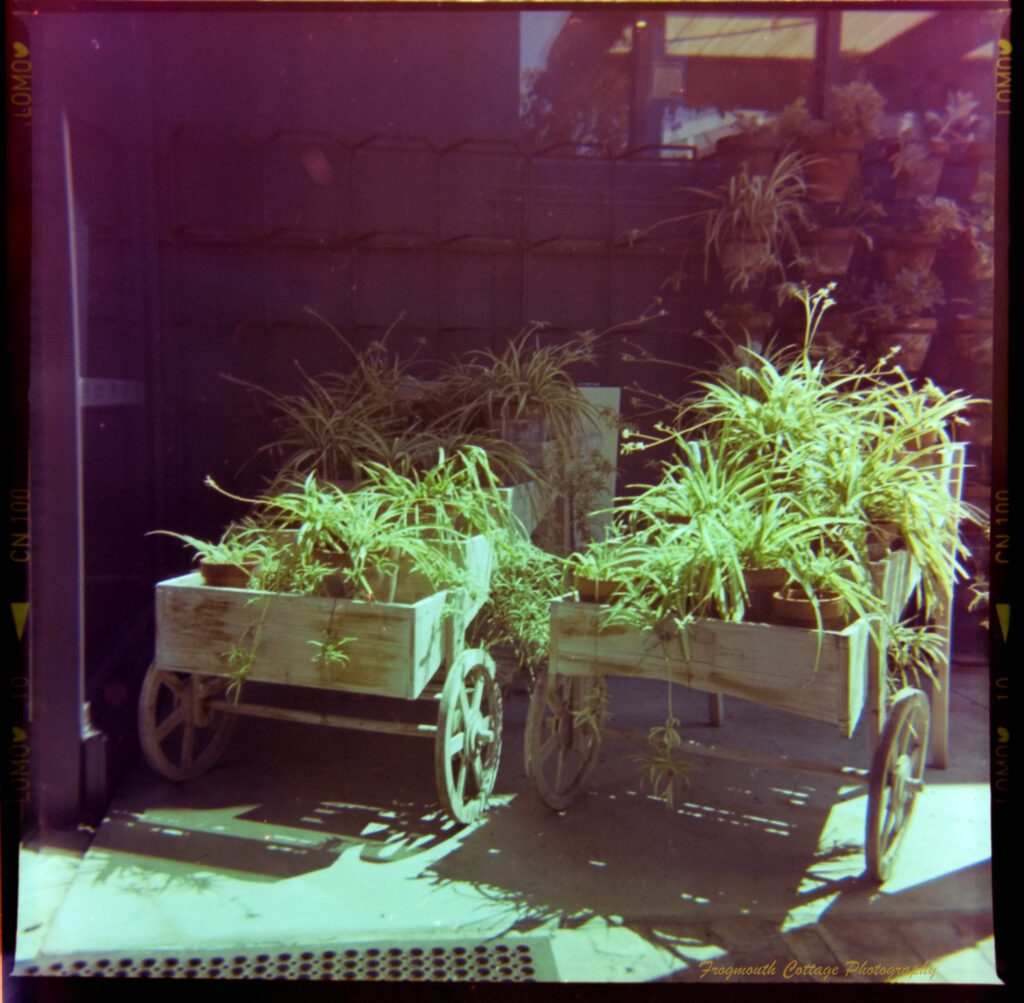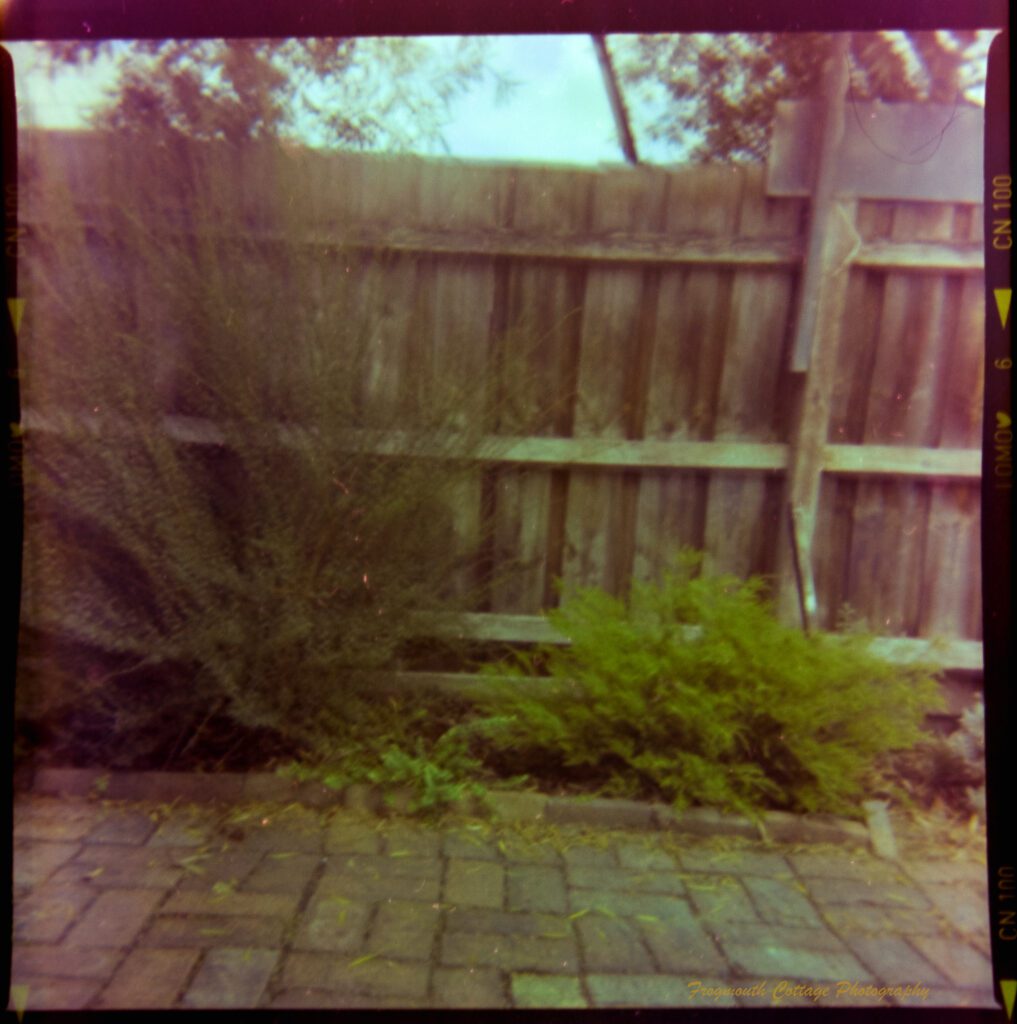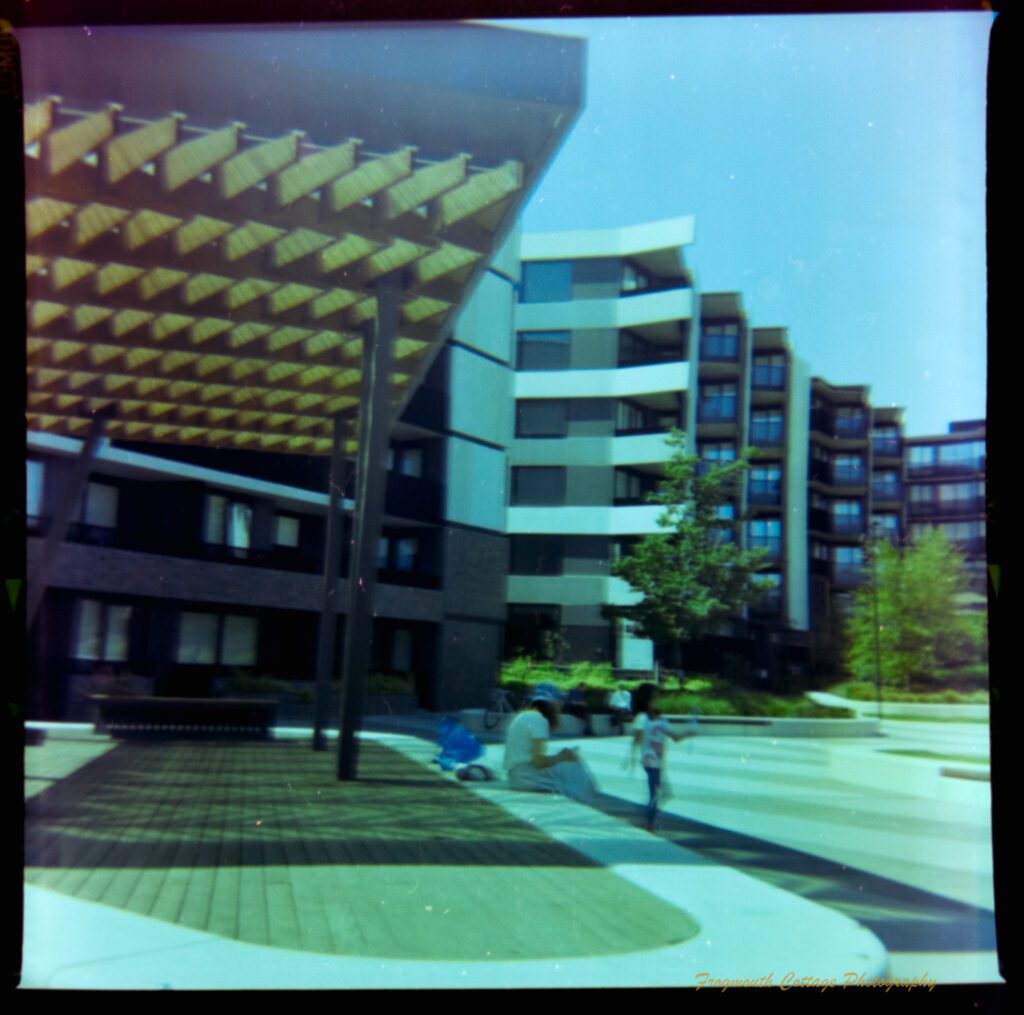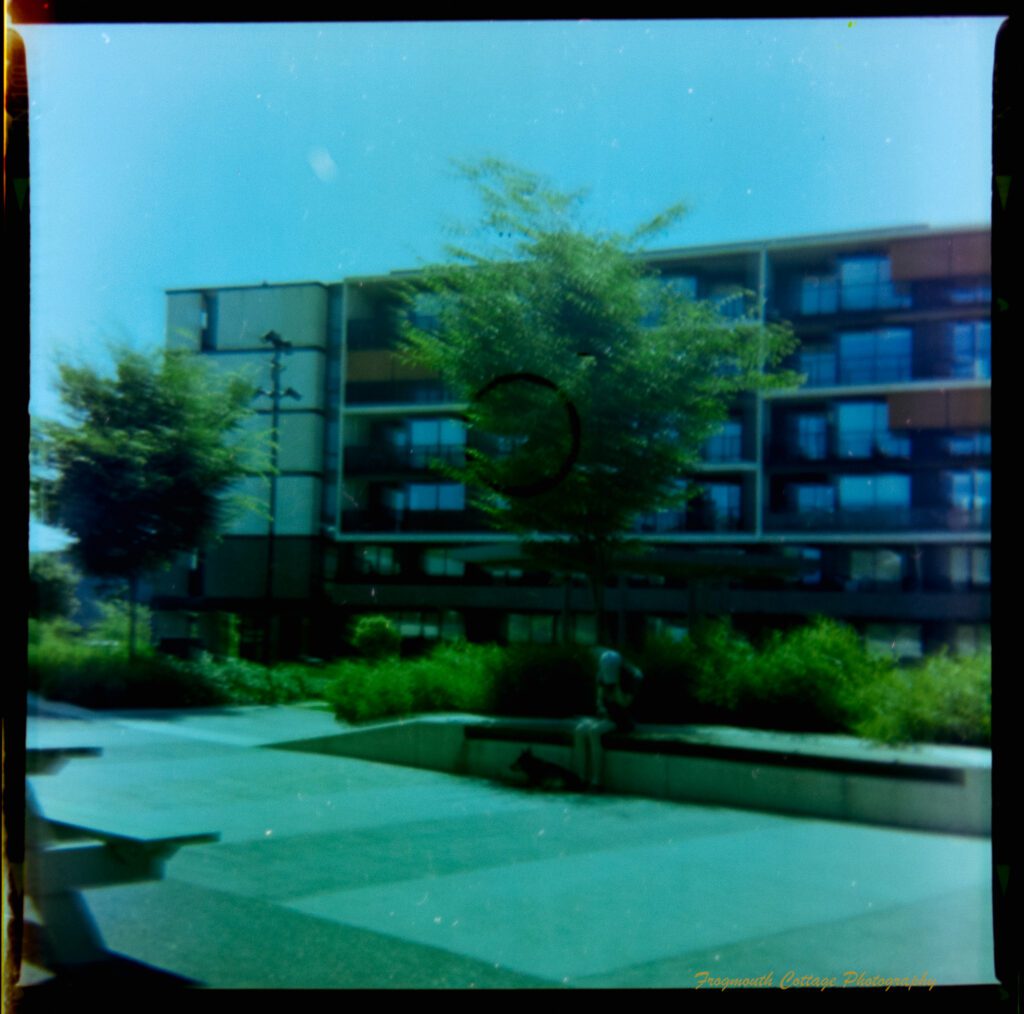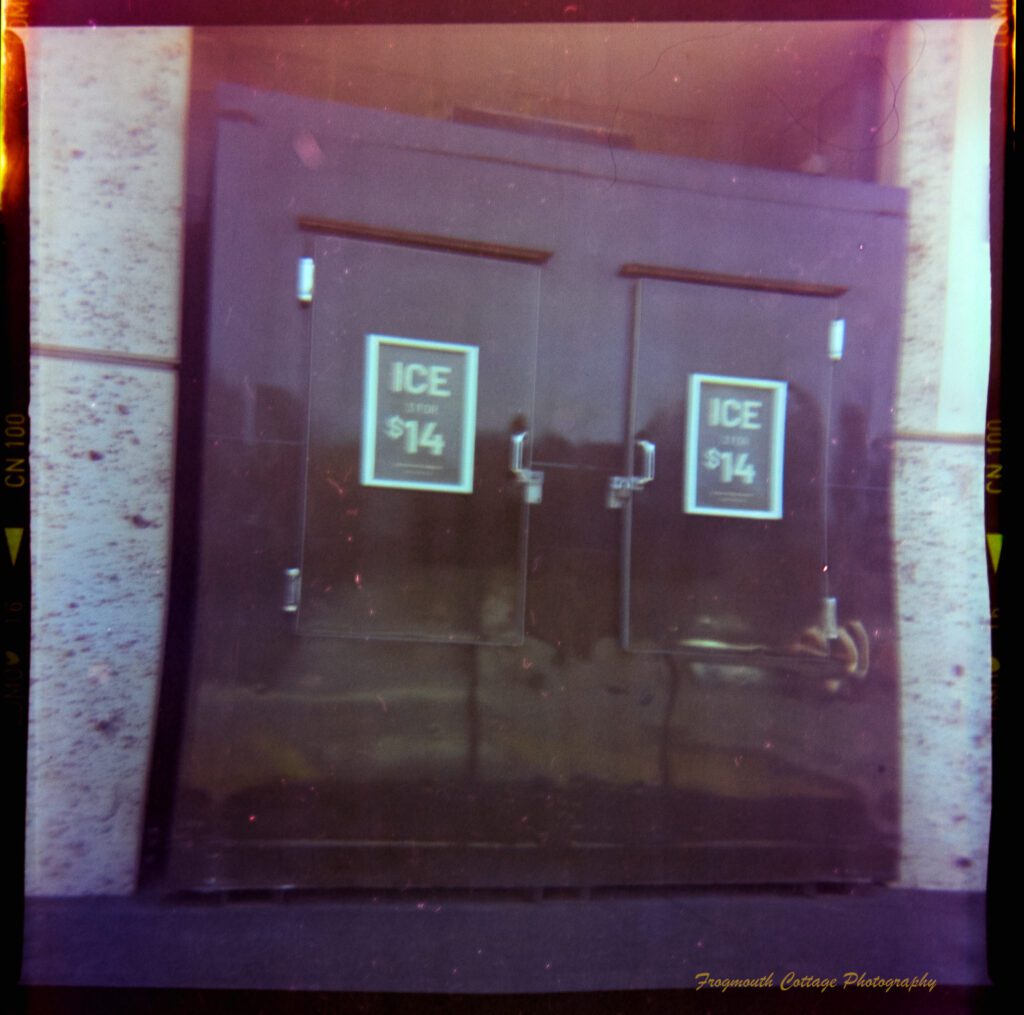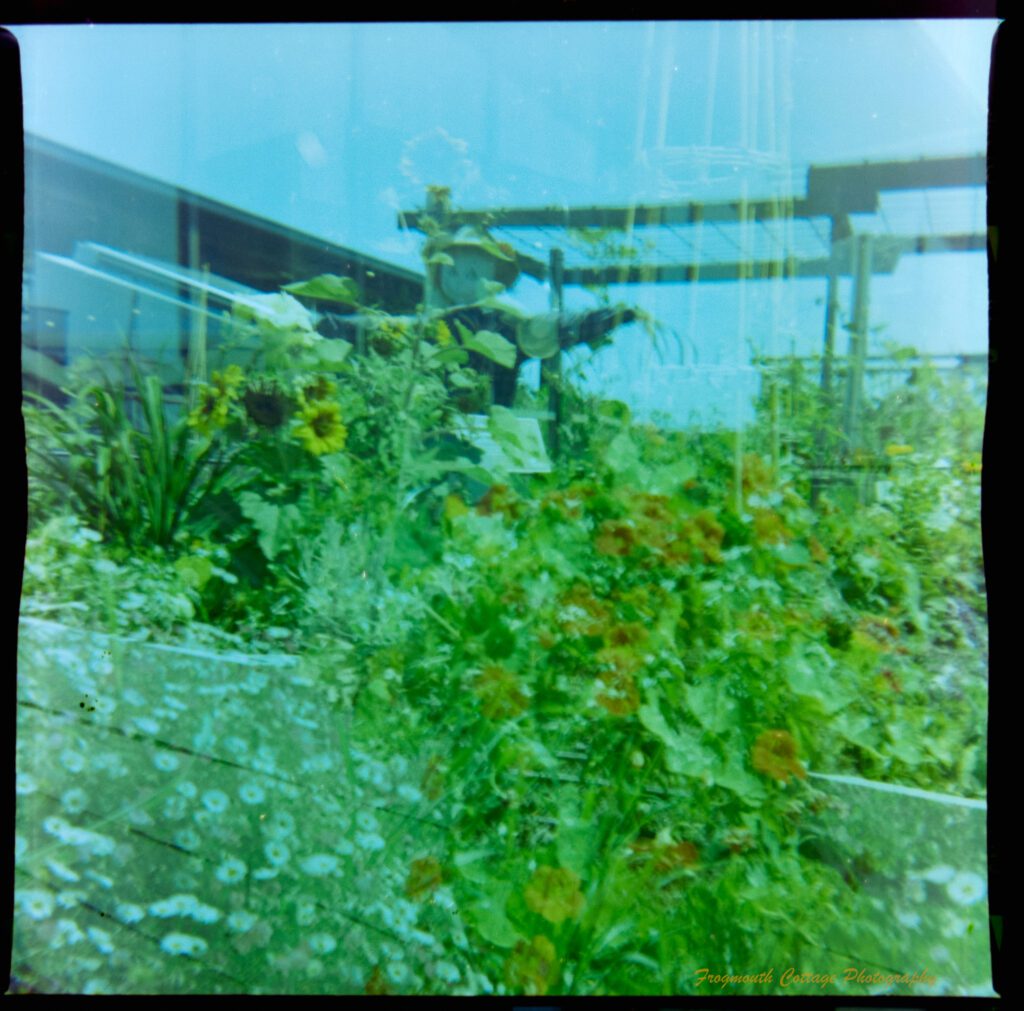The Kodak Duaflex is a 620 roll film pseudo Twin Lens Reflex (TLR) camera made by Kodak in the US and UK. My version was made in the UK, where they were produced from 1949-1955. Mine is an earlier model without a lens hood. It isn’t a true TLR because the top lens (which is very large and easy to see) is just part of the viewfinder and does not aid focussing.
The Duaflex is made of bakelite and metal, with a simple fixed focus 75mm f/15 Kodet miniscus lens. The shutter has speeds of “I” (instantaneous for snapshots) and “B” (for timed exposures), and is synched for use with a Kodalite Flasholder (which I don’t have). Focus is fixed from 1.5 metres (5 feet) to infinity.
The camera produces 12 6x6cm images. 620 film can easily be aquired by respooling 120 roll film onto a 620 spool in a dark bag. A special feature of the Duaflex was double-exposure prevention, meaning the advance knob had to be turned to the next exposure before the shutter could be activated.
The shutter speed is estimated as being 1/50 and the camera manual advises that “at the instant of exposure, hold your breath and press the exposure button with a gentle squeezing action”. There is no tripod screw, so timed exposures need to be made with the camera placed on something solid.
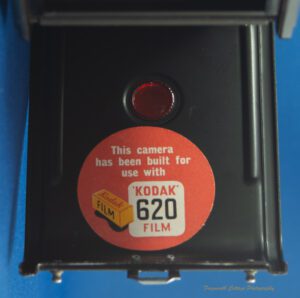
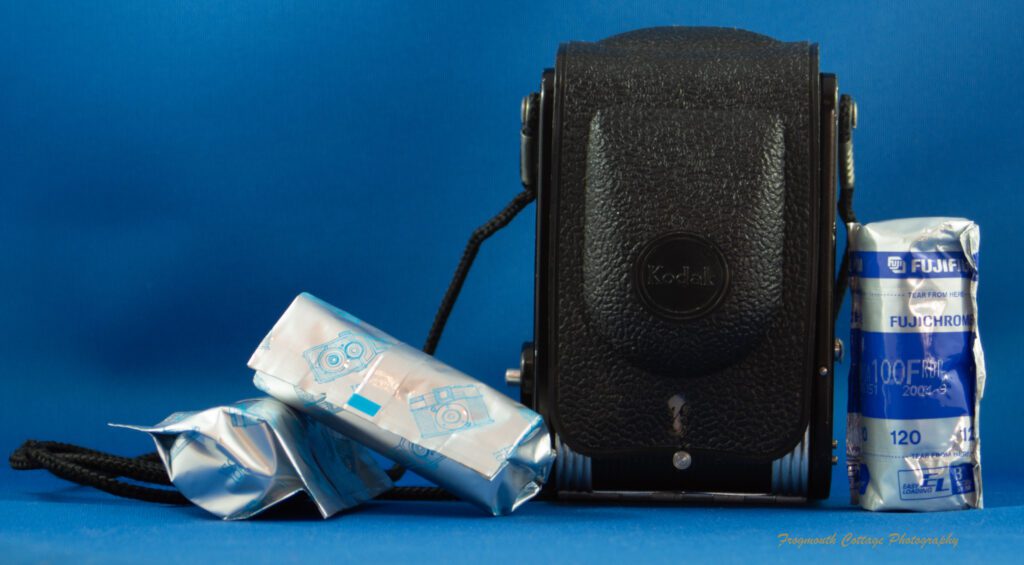
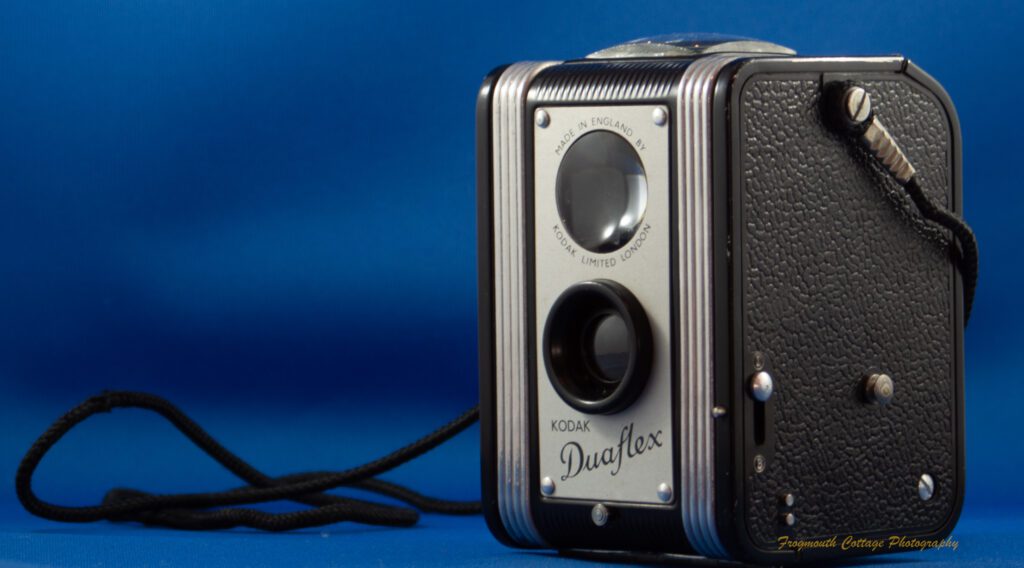
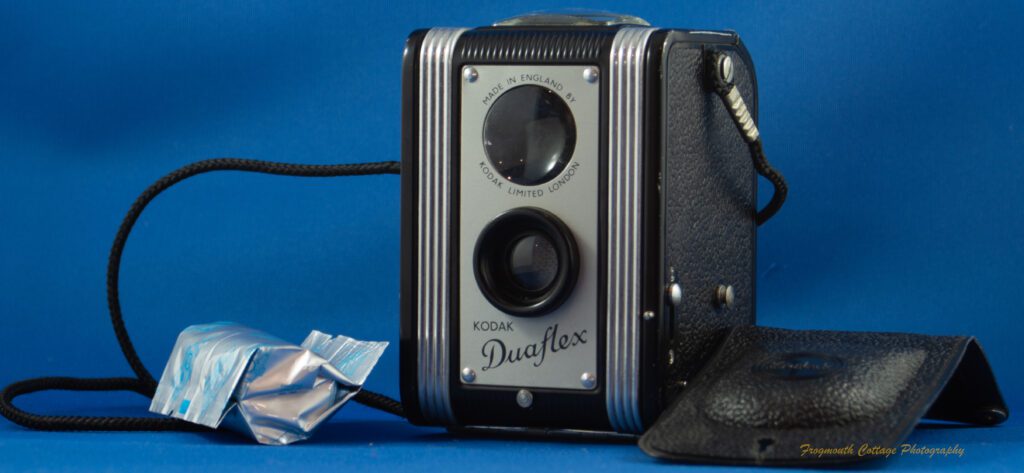
I tested the camera using expired color film, so about half of the photos had a very strong colour shift. The remainder were surprisingly good. Not the sharpest lens, and certainly better with strong light and objects that were closer to the camera (the wooden wheel barrows). I used the Art Deco Cameras exposure calculator to create a table of acceptable shooting conditions (below). Despite it not being possible to create double exposures with this camera, I did manage to do so (and it’s one of my favourite images). I think the anti-double exposure mechanism must be a bit loose and jiggling the camera around made it think I had wound the film on.
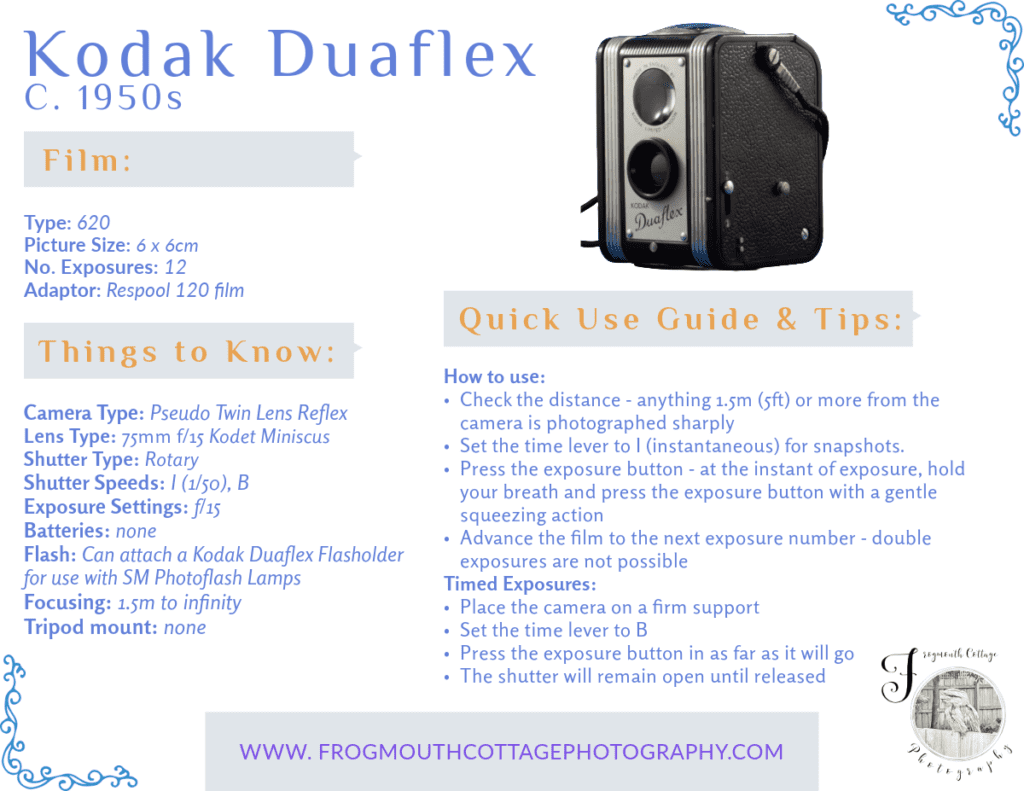
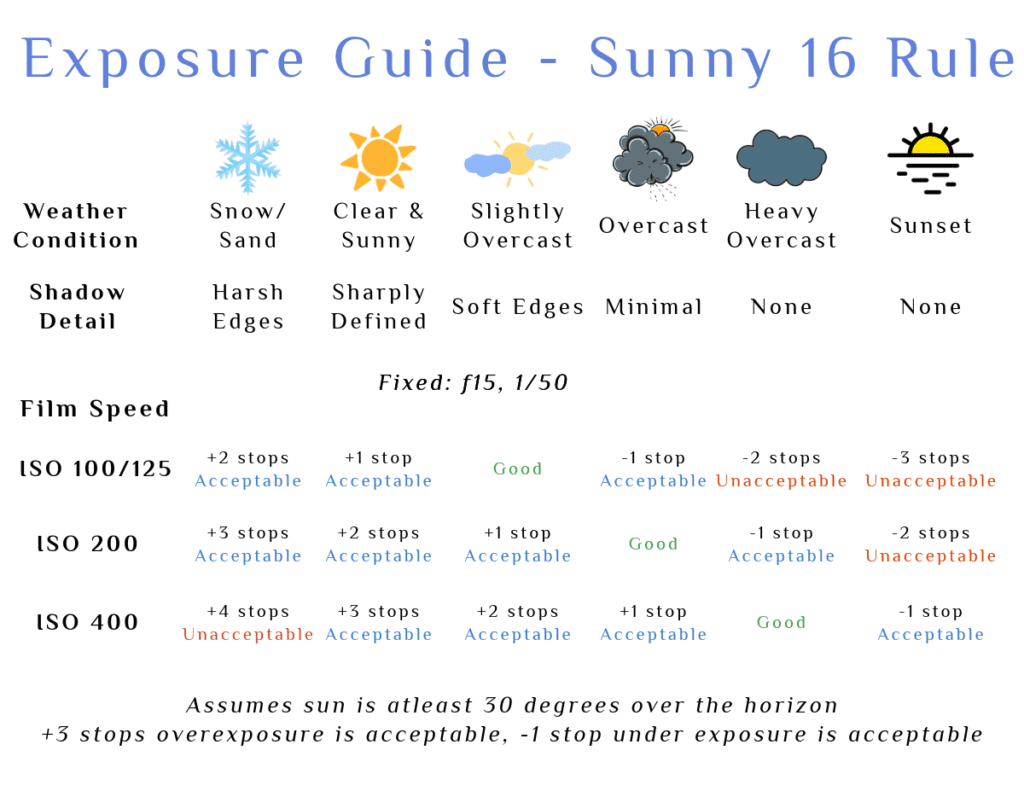
References:

